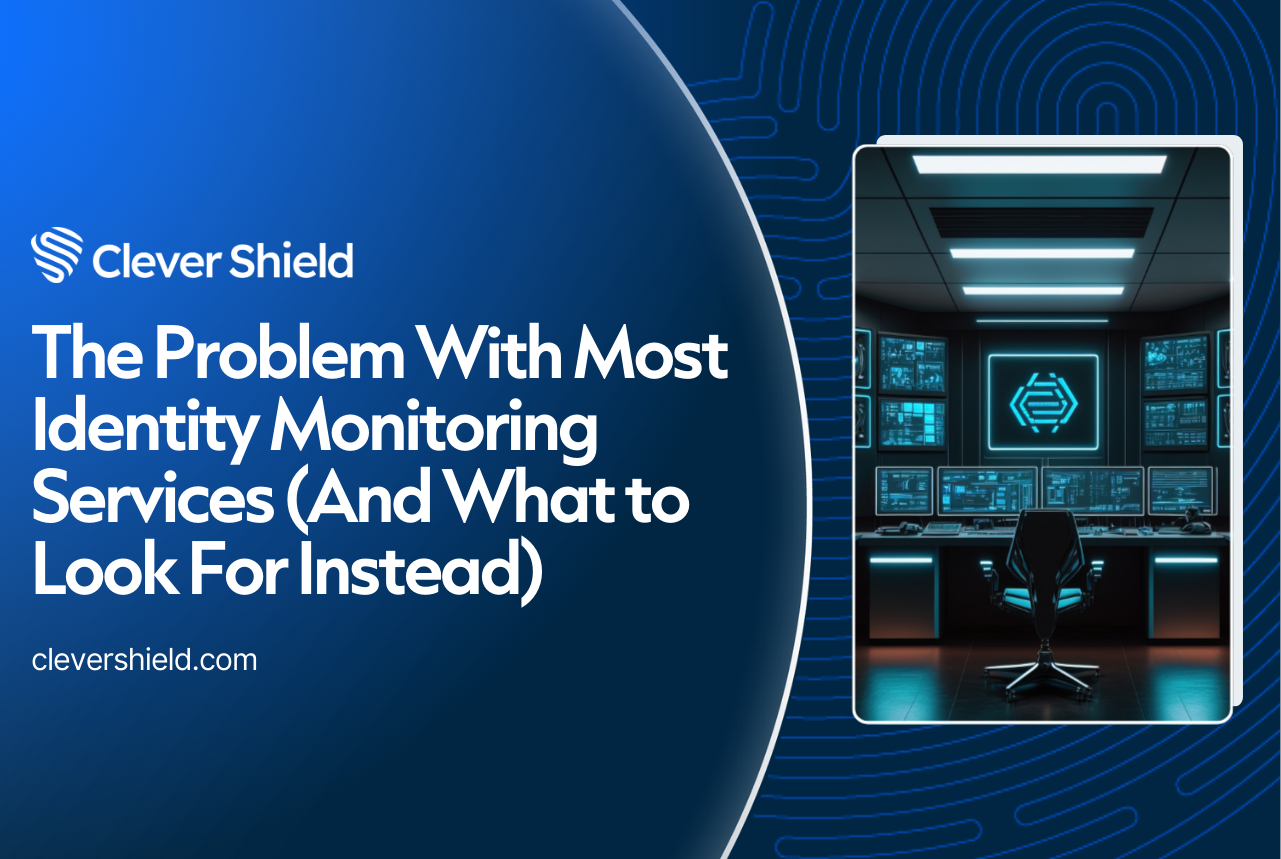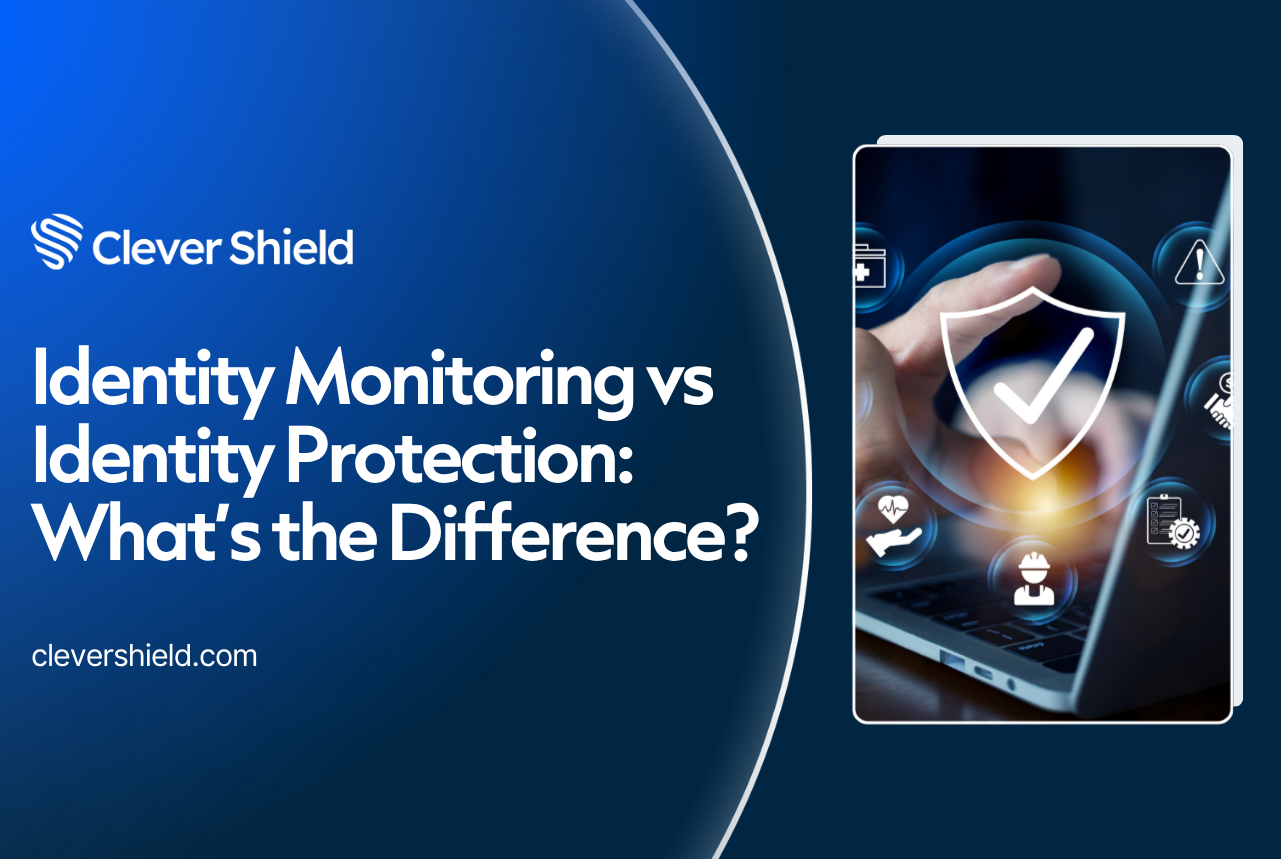Worried about identity theft? This article gives you practical tips to help Protect Online Identity, spot scams, and keep your data secure.
Key Takeaways
Identity theft is a serious concern affecting millions, with prevention crucial due to the significant financial and emotional toll on victims.
Common methods of identity theft include phishing, data breaches, and social media oversharing, highlighting the need for vigilance and secure online practices.
Employing best practices such as using strong, unique passwords, enabling multi-factor authentication, and monitoring financial accounts can effectively safeguard personal information.
Understanding Online Identity Theft
Identity theft is the act of using someone else’s personal information to impersonate or defraud them. This can include using your name, Social Security number, or financial information to commit fraud or other crimes. The implications are severe, ranging from drained bank accounts to ruined credit scores. Cyber criminals often collect small pieces of digital identity, such as photos, shopping accounts, and email accounts, to build a complete profile of the victim. Therefore, even seemingly insignificant information should be kept secure to avoid becoming a target for an identity thief.
The scale of identity theft is staggering:
More than 75 million Americans have been affected by identity theft.
Nearly $2 billion in financial losses occur annually due to identity theft.
In the U.S., a person becomes a victim of identity theft every 5 seconds.
It can take years for victims to discover and clear their name.
The most common type of identity theft reported is credit card fraud.
Other prevalent methods include loan fraud.
The financial and emotional toll on victims can be overwhelming, making prevention all the more important.
Preventing identity theft is crucial because addressing it can be time-consuming. Keeping your information secure is essential for maintaining digital identity security. Key points to consider include:
Unknown addresses or unfamiliar employers on credit reports may indicate potential identity theft.
Understanding the signs of identity theft.
Taking proactive measures to significantly reduce your risk.
Common Ways Identities Are Stolen Online
Cyber criminals employ various methods to steal identities, with phishing and data breach being among the most common. Phishing involves tricking individuals into providing personal information through unauthorized emails, texts, or phone calls. According to the FBI, this tactic ranks among the top internet crimes. Data breaches occur when unauthorized access to databases results in the theft of personal information. Such breaches can expose millions of records, facilitating identity theft and allowing cyber criminals to commit crimes. This is how cyber criminals steals personal information.
Social media has also become a hunting ground for identity thieves. Scammers frequently analyze social media accounts to gather personal info that can be misused. Oversharing personal information on social media can lead to identity theft. For example, sharing your birthdate, location, and other personal details can give cyber criminals enough information to steal your identity. Be cautious about what you share online and use the privacy settings available on social media platforms to keep your personal information private.
Another common tactic involves scammers impersonating trusted figures to extract sensitive information or money from victims. They create fake profiles on dating and professional networking sites to develop trust and then ask for money. These scams can be highly convincing, so always verify the identity of individuals before sharing any personal information.
By being aware of these common methods, you can better protect yourself from falling victim to identity theft tips.
Best Practices for Securing Personal Information Online
Securing your personal information online requires a multi-faceted approach. Essential steps include:
Keeping your software updated
Installing antivirus programs
Maintaining an active firewall
Securing your router with a password
These measures can significantly reduce the risk of identity theft. Additionally, be mindful of the information you share online and utilize security features like strong passwords and multi-factor authentication.
Using strong, unique passwords for each of your online accounts is a critical part of your online security. Weak passwords invite cyber criminals to access your personal and financial information. Enabling multi-factor authentication adds an extra layer of security for online banking and other sensitive accounts, significantly reducing the chances of unauthorized access.
Be cautious when using public Wi-Fi networks, as they can be a hotspot for identity theft. Public Wi-Fi is often unsecured, making it easy for cyber criminals to intercept your personal information. A virtual private network (VPN) can enhance security on these networks.
By following these best practices, you can effectively secure your personal information online and reduce the risk of identity theft.
Use Strong Passwords and a Password Manager
To create strong passwords is an effective way to enhance your online security. Characteristics of strong passwords include:
At least 14 characters in length
Mixed case letters
Inclusion of numbers and symbols
Avoidance of easily guessed information
Additionally, it is important to use unique passwords for different accounts because if one password is stolen, all related accounts are at risk.
Managing multiple strong passwords can be challenging, which is where a password manager becomes useful. A password manager:
Helps efficiently create and store complex passwords securely.
Can generate strong, unique passwords for each of your accounts.
Stores passwords in an encrypted database.
Makes it easier to maintain high levels of security without having to remember each password.
Enable Multi-Factor Authentication
Multi-factor authentication (MFA) adds an extra layer of security by requiring additional verification beyond just a password. Methods of MFA include:
text messages verification
Email codes
Authentication apps
Backup codes
Some accounts may allow backup codes as a secondary authentication method.
MFA makes it significantly harder for unauthorized users to access your personal and financial information. Even if a cyber criminal manages to obtain your password, they would still need the secondary verification method to gain access.
This added layer of security is particularly crucial for sensitive accounts such as online banking and mail accounts.
Be Cautious with Public Wi-Fi Networks
Using public Wi-Fi networks can pose significant risks to your online security. Public Wi-Fi is often unsecured, making it easy for cyber criminals to intercept your personal information. Avoid accessing sensitive accounts, such as bank accounts, while on public Wi-Fi. If you must use public Wi-Fi, consider using a virtual private network (VPN) to encrypt your internet connection and protect your data.
Being cautious with public Wi-Fi involves:
Being aware of the networks you connect to.
Ensuring that the network is legitimate and avoiding networks with generic names like “Free Wi-Fi.”
Always using secure connections.
Looking for “https://” in the URL when accessing websites.
By taking these careful precautions, you can minimize the risks associated with public Wi-Fi networks.
Protecting Financial Information
Protecting your financial information is essential for safeguarding your overall online identity. In 2023, the financial impact of identity theft in the U.S. reached around $10 billion. Skimming devices on ATMs or retail machines can capture data from bank cards, facilitating theft. Check fraud schemes can exploit sensitive information, including the account owner’s name, account number, address, and signature, leading to the risk of stolen funds.
To protect your savings account, consider the following steps:
Regularly monitor your bank statements to detect unauthorized transactions quickly.
Set up alerts for account activity to receive immediate notifications of suspicious transactions.
If you notice discrepancies in your account activity, report them promptly to your financial institution.
To reduce phishing risks and protect your financial information, consider the following measures:
Avoid opening sensitive financial documents or links in emails from unknown sources.
Verify that you are on your bank’s website and not a fake one.
Close accounts that were accessed fraudulently to prevent further unauthorized transactions.
Taking these measures can protect your financial information and reduce the risk of identity theft.
Dark Web Monitoring and Alerts
Dark web monitoring is essential for detecting compromised information that could lead to identity theft. This service continuously scans various sites for sensitive information and alerts users when breaches are detected. Dark web monitoring can reveal compromised credentials as well as indicators of potential attacks or breaches.
For example, Clever Shield includes dark web monitoring and alerts when exposures are detected. These alerts enable individuals and organizations to act quickly, mitigating risks before significant damage occurs.
Utilizing dark web monitoring helps you stay ahead of potential threats and protect your personal and financial information.
The Role of Identity Theft Protection Services
Identity theft protection services aim to safeguard online identities and prevent potential threats. Subscribing to such a service is a proactive step to protect personal information. These services often include features like dark web monitoring, real-time alerts, identity protection, identity theft monitoring, identity theft insurance, and identity restoration support.
Dark web monitoring tools provide insights that traditional security measures may overlook, enhancing overall security strategies. For instance, receiving alerts about data exposure on the dark web allows organizations to act quickly to mitigate risks. Many identity theft protection services also offer insurance and identity restoration support as safety nets for individuals.
NortonLifeLock and other services like LifeLock monitor for suspicious activity and provide timely alerts. Using identity theft protection services adds an extra layer of security to your personal and financial information, including lifelock ultimate.
Real-Time Monitoring and Alerts
Real-time alerts are crucial for enabling quick responses to any suspicious activities related to your identity. LifeLock monitors personal information and provides alerts for suspicious activity. Initial alerts from LifeLock can include multiple security notices about data breaches and exposed information.
LifeLock notified users instantly about potential threats, compared to others that took several hours. Top identity theft protection services should offer constant monitoring and instant alerts for suspicious activity. Clever Shield highlights the benefits of real-time monitoring and instant alerts.
Automated Data Removal
Automated data removal can reduce the chances of identity theft by eliminating personal data from online brokers. Clever Shield actively removes exposed personal data and tracks removals over time, unlike alerts-only solutions. This significantly reduces the risk of identity theft.
Clever Shield maintains a secure paper trail to stop the reinsertion of fraudulent data. It provides automated data broker removals within 24 hours. Using automated data removal ensures that your personal information remains secure and out of the hands of cyber criminals. A paper shredder can also be a useful tool in protecting your sensitive documents.
Identity Restoration Support
Identity restoration support is essential for victims seeking to restore their stolen identities. Some services guarantee financial reimbursement or identity restoration if your identity is compromised. Services like LifeLock guide users through the restoration process, making it easier for victims of identity theft.
Clever Shield saves victims hundreds of hours of stress, paperwork, and disputes by automating the hardest parts of identity restoration. This support is invaluable, helping victims reclaim their identities and get their lives back on track.
How to Respond If Your Identity Is Stolen
If you discover that your identity has been stolen, immediate action is crucial. First, file a report with the Federal Trade Commission (FTC) to document the theft. This creates an official record for the recovery process. Next, contact your financial institutions to alert them and prevent any further unauthorized transactions. They can help you close compromised accounts and open new ones.
Consider the following steps to protect your credit from identity theft:
Place a fraud alert on your credit reports to warn creditors that your identity has been stolen, making it harder for identity thieves to open new accounts in your name.
Notify the credit bureaus and credit reporting agencies to temporarily freeze your credit, preventing new accounts from being opened without your knowledge.
Monitor your credit report regularly for any suspicious activities, including credit monitoring, and consider obtaining a free credit report to stay informed.
Victims often face significant emotional distress following an identity theft incident. Recovering from identity theft can take weeks or even months, complicating victims’ lives. Use IdentityTheft.gov to get a personalized recovery plan with steps tailored to your situation. By following these steps, you can begin to restore your identity and mitigate the damage caused by identity thieves.
Additional Resources for Identity Theft Prevention
Utilizing trusted resources is vital for preventing identity theft. The Federal Trade Commission’s Identity Theft website offers extensive information on identity theft prevention and recovery. Additionally, the Consumer Financial Protection Bureau’s Fraud Protection website serves as a valuable resource for understanding your rights and reporting fraud. These resources provide comprehensive guides and tools to help you protect your identity.
The Internal Revenue Service provides guides and educational materials regarding identity theft through its Identity Theft Central. The AARP’s Fraud Watch resources inform users about various scams and preventive measures.
For more in-depth cybersecurity tactics and training, CISA offers a range of resources. Leveraging these expert institutions helps you stay informed and proactive in protecting your personal information and ensuring you have all the information necessary.
Summary
In today’s interconnected world, protecting your online identity is more critical than ever. Understanding the various methods cyber criminals use to steal identities and the best practices for securing your personal information can significantly reduce your risk. From using strong passwords and multi-factor authentication to being cautious with public Wi-Fi and monitoring your financial information, these strategies are essential for maintaining online security.
Identity theft protection services like Clever Shield provide an added layer of security with features like real-time monitoring, automated data removal, and identity restoration support. By taking proactive steps and utilizing trusted resources, you can effectively safeguard your online identity. Remember, the best defense against identity theft is a combination of vigilance, knowledge, and the right tools. Start your Clever Shield protection now and take control of your online security.
Frequently Asked Questions
What steps should I take if my identity is stolen?
If your identity is stolen, you should file a report with the FTC, contact your financial institutions, place a fraud alert on your credit reports, and notify the credit bureaus to freeze your credit. Utilizing IdentityTheft.gov will also provide you with a personalized recovery plan.
How can I create strong passwords?
To create strong passwords, ensure they are at least 12 characters long, incorporating mixed case letters, numbers, and symbols while avoiding easily guessed information. Utilizing a password manager can further enhance security by generating and storing complex passwords.
What is dark web monitoring?
Dark web monitoring involves the continuous scanning of dark web sites for sensitive information, alerting users to breaches, and aiding in the identification of compromised credentials. This proactive approach helps mitigate potential security threats.
How do identity theft protection services work?
Identity theft protection services work by monitoring for suspicious activity and providing real-time alerts, alongside features such as dark web monitoring and identity theft insurance. Their primary aim is to safeguard your personal information and assist in restoring your identity if it is compromised.
Where can I find additional resources on identity theft prevention?
For comprehensive resources on identity theft prevention, you can visit the Federal Trade Commission’s Identity Theft website, the Consumer Financial Protection Bureau’s Fraud Protection website, the IRS’s Identity Theft Central, and AARP’s Fraud Watch resources. These platforms provide valuable information to help protect your identity.






